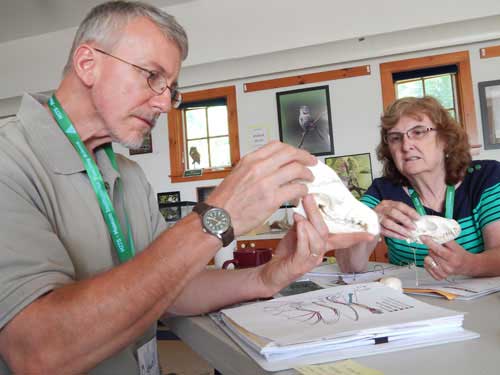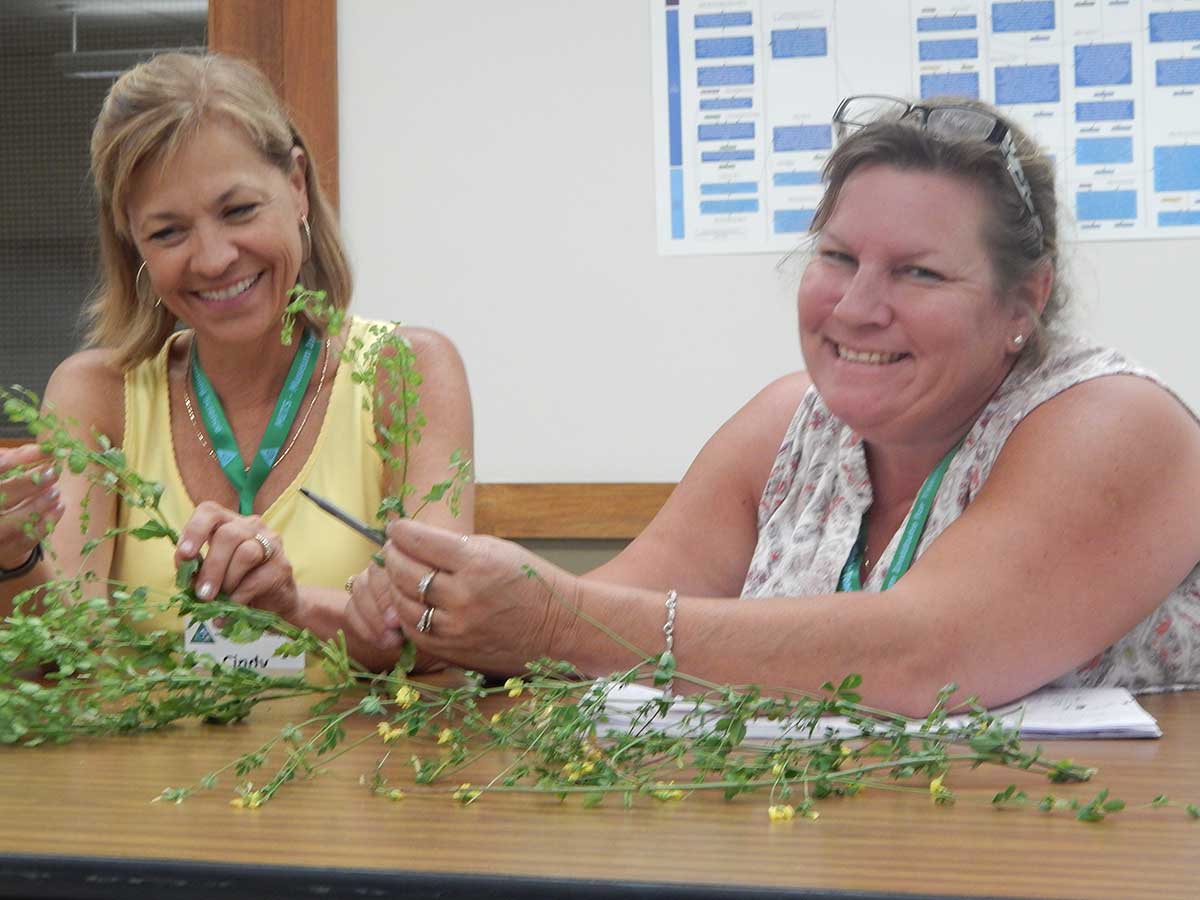Friday, September 7, 2018
For Immediate Release
In Central Massachusetts, Teachers Use Inquiry to
Investigate Biological Adaptations
Worcester, MA – Over the course of one week, Worcester-area elementary and middle school teachers learned more about biological adaptations during the July 9-13, 2018 Museum Institute for Teaching Science (MITS, Inc.) Central Region Summer Professional Development Institute, “Parts and Purpose: Using Inquiry to Explore Structure and Function in Nature’s Laboratory”. Teachers made local connections to science content by learning from educators and scientists from Mass Audubon’s Broad Meadow Brook Wildlife Sanctuary and Wachusett Meadow Wildlife Sanctuary, Tower Hill Botanic Garden, and Worcester Polytechnic Institute.
Led by Dr. Martha Gach, Conservation Coordinator at Broad Meadow Brook Wildlife Sanctuary, educators used the Science and Engineering Practices while engaging in hands-on, minds-on learning about animals and plants they could find in their own backyards. Teachers began their investigations by observing the physical features of birds, noting how wing designs impact flight and beak shapes are adapted for food preferences. By comparing and contrasting bone structures on animal skulls, educators reinforced their understandings of evolutionary concepts.
At Tower Hill Botanic Garden, teachers turned their attention to plants, investigating various structures and methods plants can use to grow, reproduce, and spread their seeds. Worcester Polytechnic Institute professor, Robert Gegear, introduced the group to the vital role in plant pollination played by bumblebees. Teachers became acquainted with the species that are native to Massachusetts, and added video data to Gegear’s Bee-cology citizen science project.
Moving on to the Wachusett Meadow Wildlife Sanctuary, educators explored the mutualistic relationship of the milkweed plant and monarch butterfly, and observed the relationships among macroinvertebrates found in ponds. They dug deeper into ecology by carrying out investigations of the fauna found in soil samples back at Broad Meadow Brook. By observing the samples under microscopes, participants were surprised to find that the predator-prey relationships were not as they had expected. Educators applied their new knowledge to re-draw their model of the soil ecosystem.
How did these teachers connect their professional learning to their classrooms? Dr. Gach reported:
“All week long, teachers networked with each other, exploring how to make better use of the outdoor resources available at their schools. Some were designing pollinator gardens for their school, others designed investigations to get children exploring schoolyard trails or nearby open space.”
Teachers who participated in the Museum Institute for Teaching Science Central Region Summer Professional Development Institute strengthened their skills in both science and pedagogy while gaining expertise in science content and building their repertoire of hands-on, minds-on activities to promote inquiry-based learning in their classrooms. In early November, these educators will reconvene for a fall callback session that provides them with an opportunity to continue learning with and from one another.
###
The Museum Institute for Teaching Science specializes in providing hands-on, minds-on, inquiry-based STEM professional development for formal and informal educators. For more information, visit www.mits.org or call 617-328-1515.


